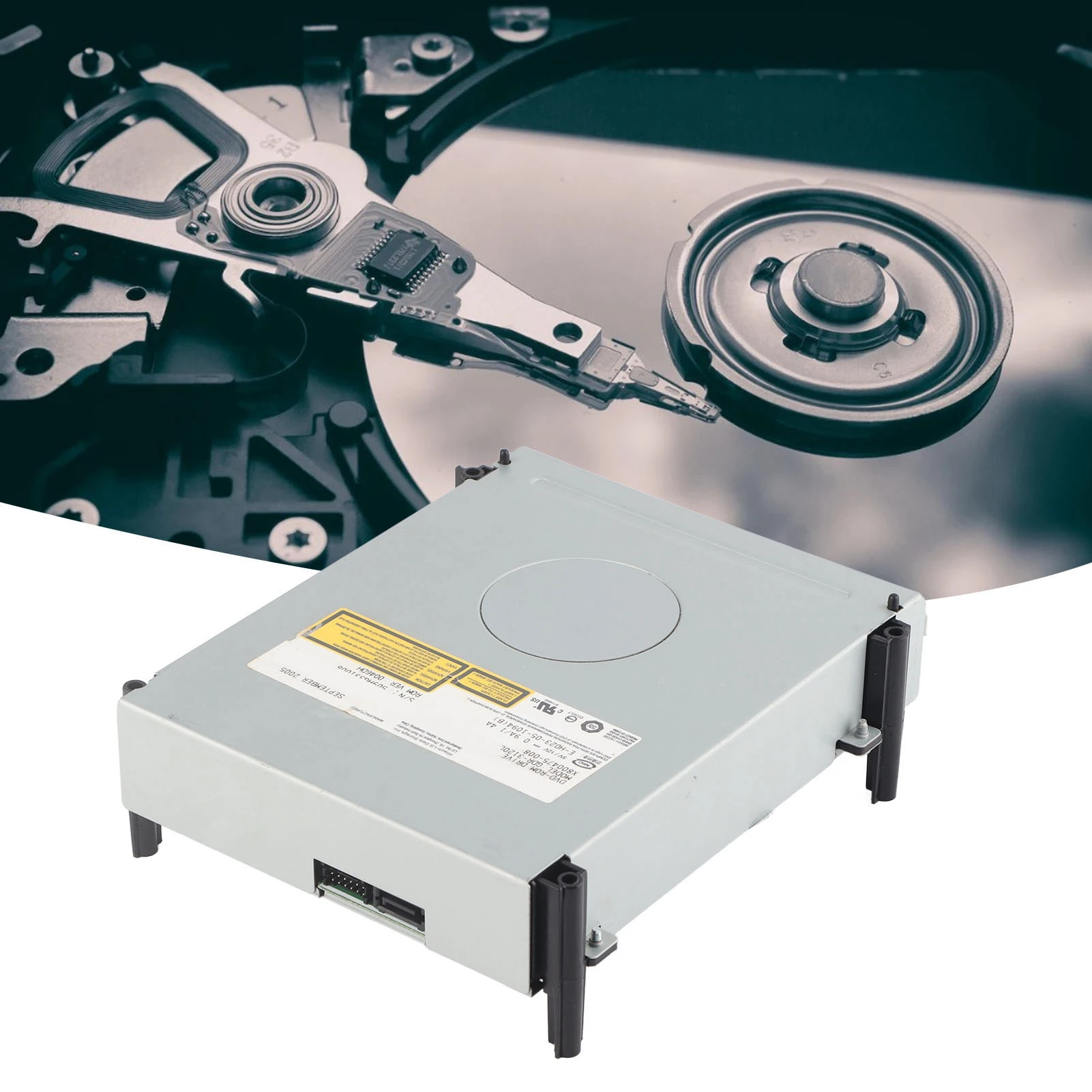For decades, the optical drive has been a workhorse of the digital age. While its prominence may have waned in the era of cloud storage and streaming services, it remains a valuable tool with a rich history and continued relevance. This article delves into the functions of the optical drive, exploring its role in data storage, media consumption, and software installation.
A Beacon of Light: Reading and Writing with Lasers
At its core, the optical drive utilizes a laser beam to interact with optical discs, a family of storage media that includes CDs, DVDs, and Blu-ray discs. These discs are coated with a reflective layer that the laser interacts with. During the reading process, the laser scans the disc, detecting variations in the reflection. These variations encode the data stored on the disc, allowing the drive to translate them into digital information for the computer.
The functionality of the optical drive extends beyond simply reading data. Many drives offer writing capabilities as well. In this case, the laser beam is used to burn or etch data onto a writable disc. Common writable disc formats include CD-R (recordable once) and CD-RW (rewritable). These discs act as a blank canvas for users to store personal data, create backups, or even compile their own music CDs.

A Multimedia Powerhouse: From Music CDs to Hollywood Blockbusters
The optical drive’s impact on the entertainment industry has been nothing short of revolutionary. The introduction of the CD-ROM drive in the late 1980s ushered in a new era for music consumption. CDs offered superior audio quality and storage capacity compared to traditional cassette tapes, quickly becoming the dominant format for music distribution.
The evolution continued with the arrival of the DVD drive in the late 1990s. DVDs boasted significantly larger storage capacities than CDs, paving the way for the distribution of movies and other multimedia content. The stunning visuals and immersive sound offered by DVDs transformed the home theater experience. Blu-ray discs, introduced in the late 2000s, further pushed the boundaries with even higher storage capacities and support for high-definition video.

Software Savior: Installing Applications in the Pre-Download Era
The optical drive played a crucial role in software distribution before the widespread adoption of the internet. Operating systems, games, and productivity applications were all distributed on physical media, primarily CDs and DVDs. Users would insert the disc into the drive, and the installation process would initiate automatically. While this method may seem archaic today, it offered a reliable and secure way to distribute software for years.

Beyond Entertainment and Installation: The Unsung Hero of Data Backups
While streaming services and cloud storage have become popular options for media consumption and data storage, the optical drive remains a valuable tool for backups. Creating backups on optical discs offers several advantages. Firstly, discs are relatively inexpensive and can store large amounts of data. Secondly, they are not reliant on an internet connection, making them a secure and offline storage solution. Finally, discs have a long shelf life, with proper storage, they can last for decades, ensuring the long-term accessibility of your data.
The Future of the Optical Drive: Adapting to a Changing Landscape
The rise of cloud storage and high-speed internet has undoubtedly impacted the use of optical drives. However, the optical drive is not obsolete. For tasks requiring offline storage or permanent archiving, discs remain a reliable option. Additionally, the affordability and large storage capacity of writable discs make them suitable for creating backups of important data.
Furthermore, the optical drive industry continues to innovate. New disc formats, such as Archival Disc (AD), offer even greater storage capacities and longer lifespans, catering to the growing demand for long-term data archiving.

Future of optical drives
The optical drive, once a ubiquitous presence in computers, has faced challenges in the age of cloud storage and high-speed internet. However, its legacy and unique functionalities suggest an interesting future where it adapts to new needs. Here’s a glimpse into what lies ahead for this technology:
Specialization for Archiving:
-
Archival Disc (AD) Technology: New disc formats like ADs boast significantly higher storage capacities (up to 1 petabyte) and extended lifespans (centuries). These advancements make them ideal for long-term data archiving in libraries, museums, and government agencies.
-
Offline Backups: As data volumes continue to explode, the need for secure, offline backups remains. Optical discs offer a cost-effective and reliable solution, particularly for sensitive data in healthcare, finance, and sectors with limited internet access.
Material and Manufacturing Advancements:
-
Next-Gen Materials: Research on novel materials with higher data densities could lead to even more compact discs with significantly larger storage capacities. This could make them more competitive with solid-state drives (SSDs) for specific applications.
-
Automated Manufacturing: Advancements in automated manufacturing processes could lead to a reduction in production costs for optical discs, making them a more attractive storage option for various industries.
Integration with Cloud Storage:
- Hybrid Solutions: Future optical drives might integrate seamlessly with cloud storage platforms. This could involve features like automatic data encryption and cloud backup for discs, offering a hybrid approach that leverages the strengths of both technologies.
Emerging Applications:
-
Data Security: The air-gapped nature of optical discs (not connected to the internet) makes them valuable for storing highly sensitive data in a world increasingly vulnerable to cyberattacks. This could lead to new applications in cybersecurity and national security.
-
Quantum Computing: With the rise of quantum computing, the need for specialized data storage solutions may emerge. Optical discs, with their unique data encoding capabilities, could potentially play a role in this evolving field.
The future of the optical drive hinges on its ability to adapt and specialize. While it may not regain its former dominance, it has the potential to carve out a niche as a reliable, secure, and cost-effective storage solution for specific needs.
Explanation of industries that still rely on optical drives for data storage
While cloud storage has become increasingly popular, several industries continue to rely on optical drives for data storage. Here’s a breakdown of some key sectors:
Archival Storage:
-
Libraries & Museums: These institutions hold vast amounts of historical data, including documents, photographs, and audio recordings. Optical discs, particularly Archival Discs (ADs) with their extended lifespans, offer a reliable and secure way to archive this data for future generations.
-
Government Agencies: Government records often need to be preserved for legal or historical reasons. Optical discs provide a cost-effective and long-term storage solution for critical government documents.
Data Security & Offline Backups:
-
Healthcare: Patient data is highly sensitive and requires robust security measures. Optical discs offer an air-gap storage solution, meaning they are not connected to the internet, reducing the risk of cyberattacks. Hospitals may use them to back up patient records.
-
Finance & Banking: Financial institutions deal with sensitive financial information. Optical discs provide a secure and reliable way to create offline backups of this data, ensuring its availability in case of system failures.
Limited Internet Access:
- Remote Locations: In areas with limited or unreliable internet access, cloud storage becomes impractical. Optical discs offer a dependable alternative for data storage and transfer.
Specialized Industries:
-
Broadcast & Media Production: The media industry often deals with large video and audio files. High-capacity optical discs, like Blu-ray discs, are used for storing and distributing these files.
-
Manufacturing & Engineering: Complex design files and blueprints may be stored on optical discs for easy access and long-term archiving.
Overall, optical drives remain a valuable data storage solution for industries that prioritize security, offline access, long-term archiving, or deal with very large data files.

A Legacy of Innovation: A Versatile Tool for the Digital Age
In conclusion, the optical drive has played a pivotal role in the evolution of the digital age. From revolutionizing music consumption to facilitating software installation and data backups, its impact has been undeniable. While its dominance may have shifted with the rise of new technologies, the optical drive remains a versatile tool with continued relevance. As technology continues to evolve, the optical drive is likely to adapt and find new applications, ensuring its place in the ever-changing digital landscape.


